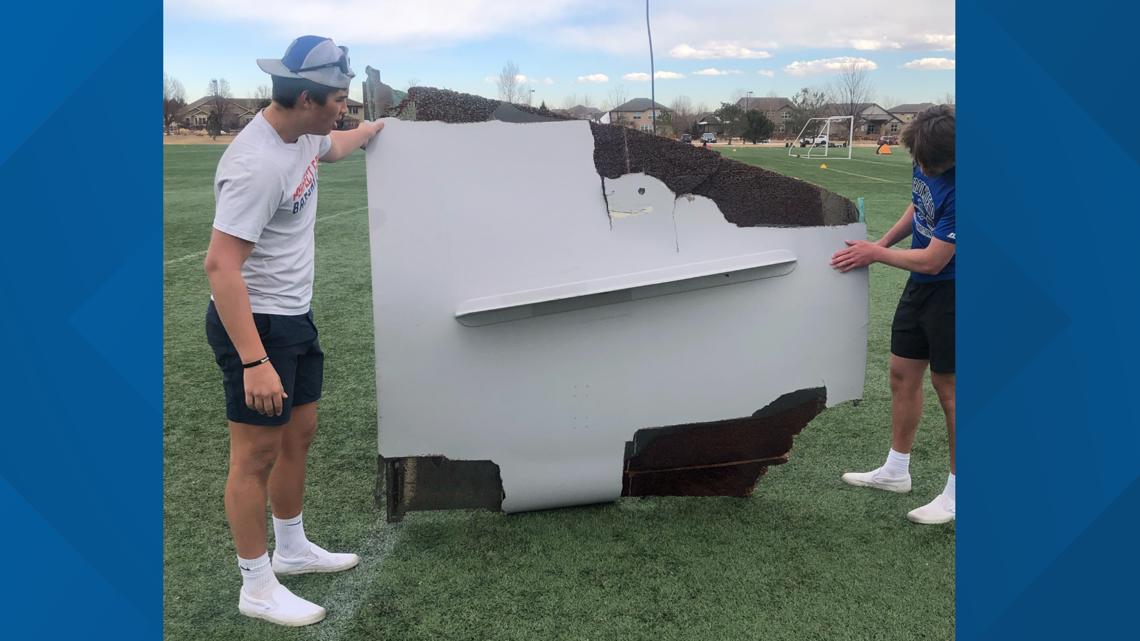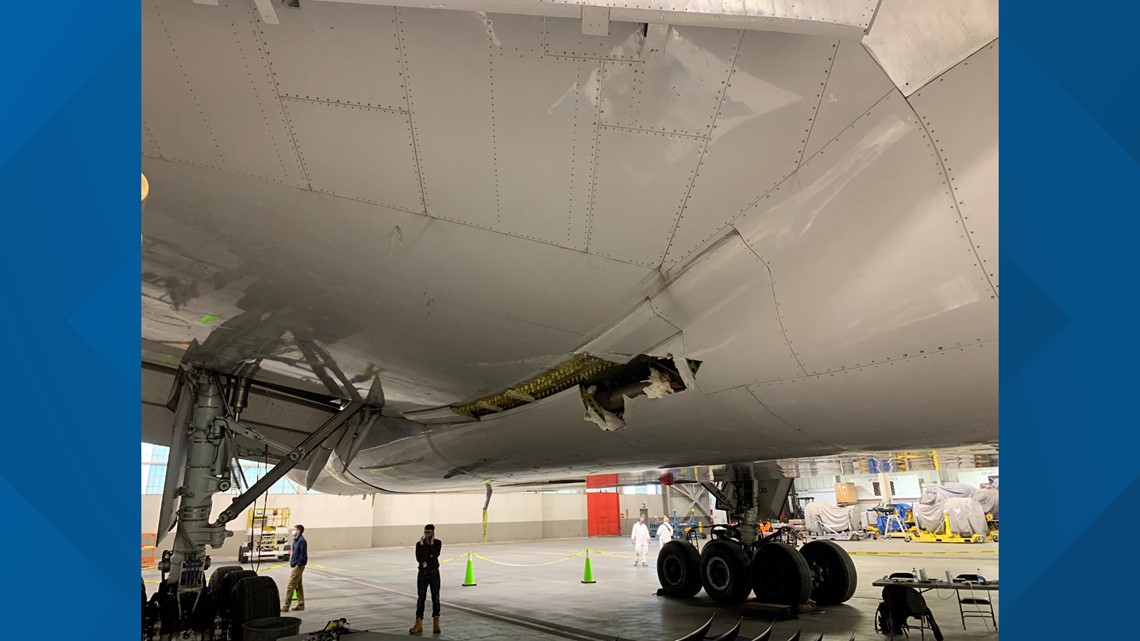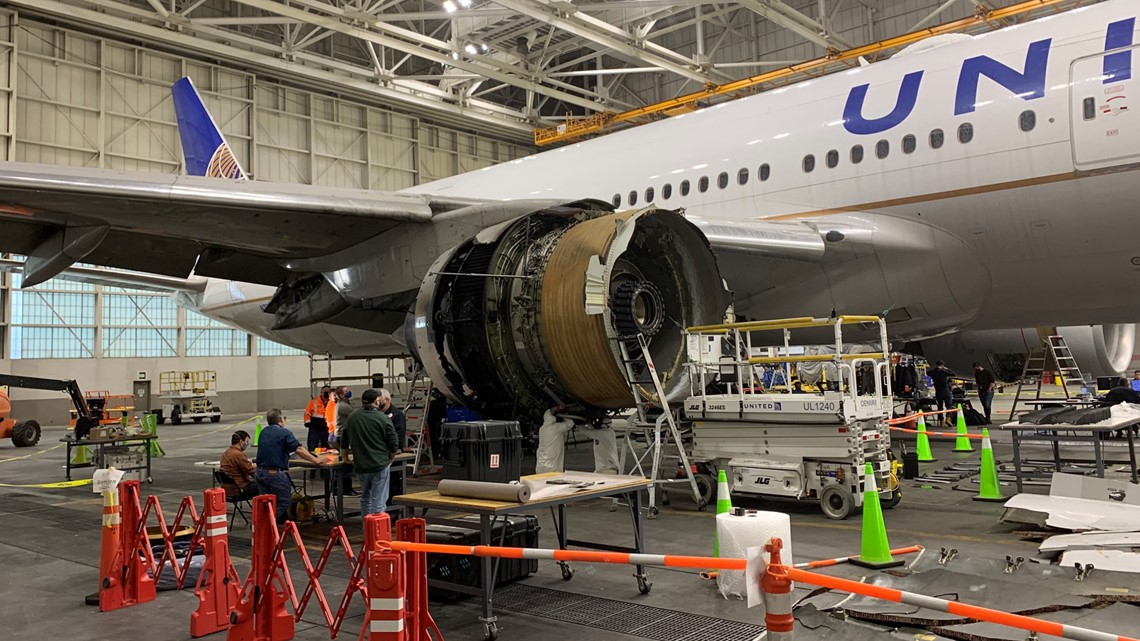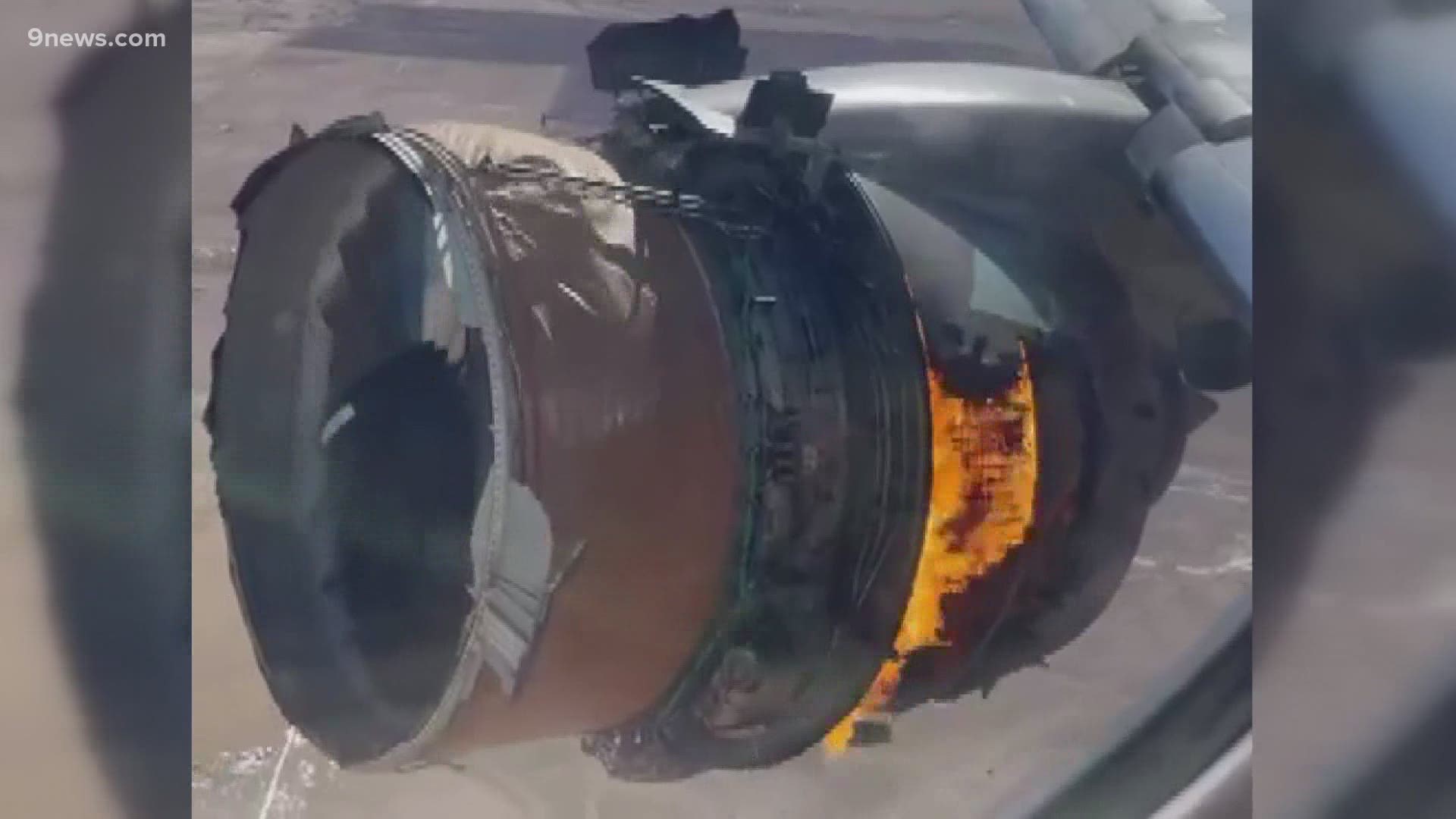DENVER — It started just after 1 p.m. Saturday, when the right engine exploded on United Airlines Flight 328 minutes after the aircraft took off from Denver International Airport (DIA) and rained down debris over Broomfield.
Two days later, investigators have released their preliminary findings into the Boeing 777's engine failure. As of Tuesday morning, here is what's known:
Boeing 777 engine fails
United Airlines Flight 328 was a 1995 Boeing 777-222, tail number N772UA, owned by United Airlines. It was a 400-seat aircraft with two Pratt & Whitney PW4077 engines, according to the Federal Aviation Administration (FAA).
The flight from DIA to Daniel K. Inouye International Airport in Honolulu took off at 1:04 p.m. Saturday. The flight had 229 passengers and 10 crew members on board, according to the National Transportation Safety Board (NTSB).
Only minutes later, the plane's right engine exploded. The pilot circled the aircraft south and east, and made an emergency landing at DIA at 1:29 p.m., while in the cabin, passengers took cellphone video of the burning engine. The flight landed safely, and there were no injuries on board.
Debris rains down on Broomfield
When the engine exploded, pieces of debris fell over about a four-square-mile area of Broomfield around Commons Park and the Red Leaf and Northmoor Estates neighborhoods.
The largest piece, the engine cowling, landed in a front yard on Elmwood Street near East 13th Avenue. Other pieces of varying sizes landed in yards and streets. One piece punched a hole in the roof of a home.
Visitors to Commons Park, who included kids practicing soccer and families at the dog park, ran for cover as chunks of the engine rained down. No one on the ground was injured.
The Broomfield Police Department (BPD) was inundated with calls to 911. They released a sampling of the calls:
BPD asked people to not touch or move any debris that they find and to call the police department at 303-438-6400.
On Monday, they changed that guidance to ask that residents call only if they find a substantial piece with identifying factors like a serial number or part number.


NTSB investigation
The National Transportation Safety Board (NTSB) said on Saturday that it would investigate the United flight's engine failure. The federal agency, along with BPD, coordinated to collect the engine pieces that fell on the city.
The federal agency released a preliminary update on Sunday afternoon that said most of the damage to the aircraft was contained to the engine, but that the airplane also sustained minor damage.
In the engine, one fan blade had broken off at the base and a second one broke in the middle. A portion of one blade was imbedded in the containment ring. All the other fan blades were damaged, the preliminary report says.
The cockpit voice recorder and flight data recorder were taken to the NTSB laboratory in Washington, D.C., for analysis, the report says.
NTSB shared more details Monday, explaining that while preliminary investigations show there were no signs of structural damage to the plane, there were signs of metal fatigue as well as damage where the wing meets the body, NTSB Chairman Robert Sumwalt said.


Sumwall added there was an indication that fuel to the fire in the engine was turned off, a question investigators had after seeing videos of the engine on fire, so NTSB will be looking into what propagated the fire.
Boeing 777s taken out of service
United Airlines said in a statement Sunday evening that it was "voluntarily and temporarily" taking 24 Boeing 777 airplanes powered by Pratt & Whitney 4000 series engines out of service.
"Since yesterday, we’ve been in touch with regulators at the National Transportation Safety Board (NTSB) and FAA and will continue to work closely with them to determine any additional steps that are needed to ensure these aircraft meet our rigorous safety standards and can return to service. As we swap out aircraft, we expect only a small number of customers to be inconvenienced," the statement from United reads.
United said it has 52 of the affected aircraft in its fleet – 24 active and 28 in storage.
Boeing followed suit and recommended suspending operations of all 777s with the specific engine type, the company said late Sunday.
Also on Sunday, the FAA in a tweet said that Administrator Steve Dickson had directed an Emergency Airworthiness Directive that would require immediate or stepped-up inspections of Boeing 777 airplanes equipped with certain Pratt & Whitney PW4000 engines.
Pratt & Whitney said in a statement on Sunday that the company had dispatched a team to work with investigators and was "actively coordinating with operators and regulators to support the revised inspection interval of the Pratt & Whitney PW4000 engines that power Boeing 777 aircraft."


Previous Boeing incidents
This wasn't the first time a Boeing 777 experienced engine failure. In February 2018, the engine cover came off during a United Airlines flight from California to Hawaii.
Flight 1174 from San Francisco to Honolulu landed safely. Images and video posted to social media showed an engine with its exterior covering missing and the engine shaking back and forth with pieces of the cover flapping in the wind.
More recently, Boeing's 737 Max returned to U.S. skies in December after it was grounded following two deadly crashes.
The FAA approved changes that Boeing made to an automated flight-control system implicated in crashes in Indonesia and Ethiopia that killed 346 people in all. In both crashes, the system pushed the nose down repeatedly based on faulty sensor readings, and pilots were unable to regain control.
The FAA cleared the way for U.S. airlines to resume using the plane if certain changes are made and pilots are provided with additional training, including time in a flight simulator.
SUGGESTED VIDEOS: Local stories from 9NEWS

